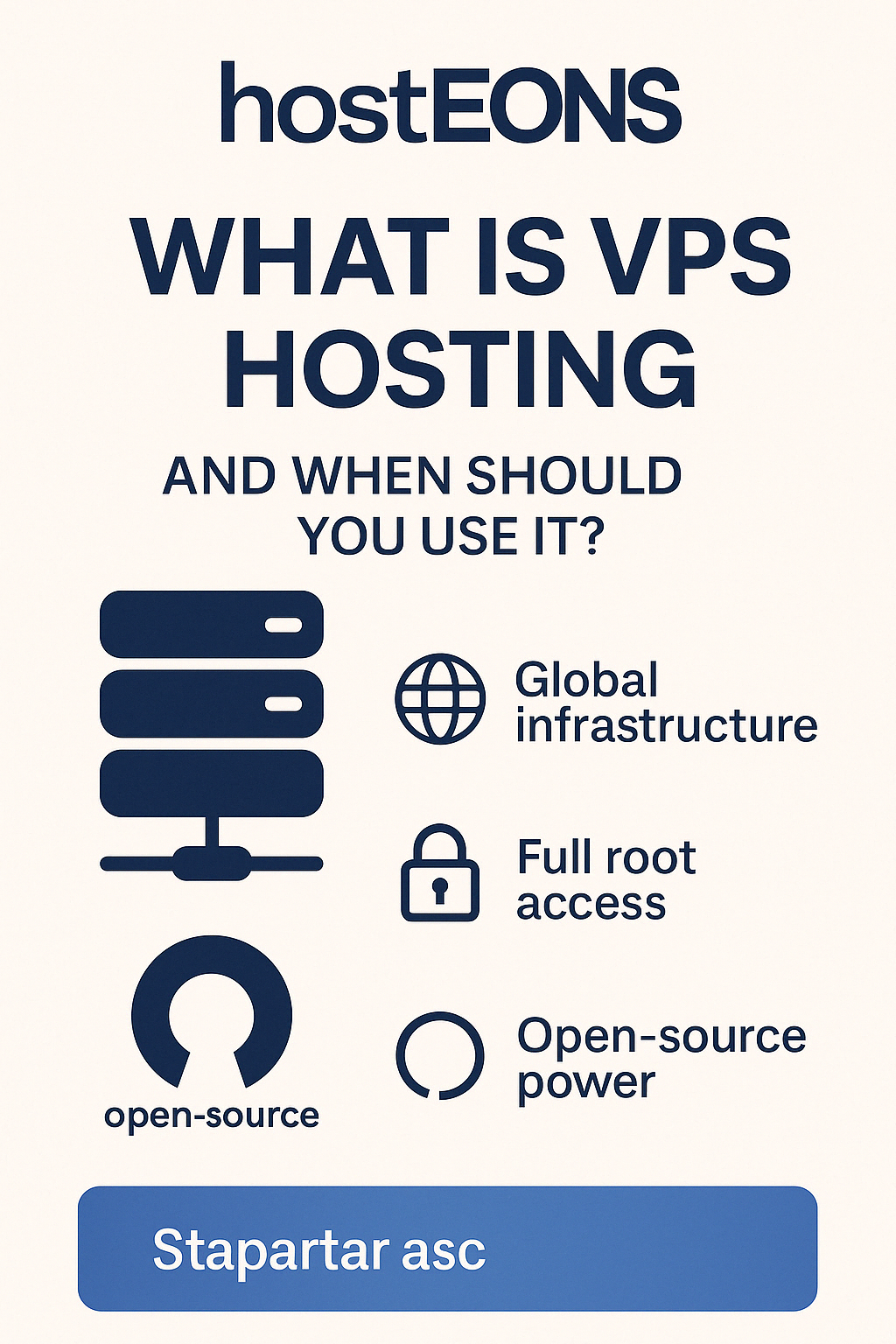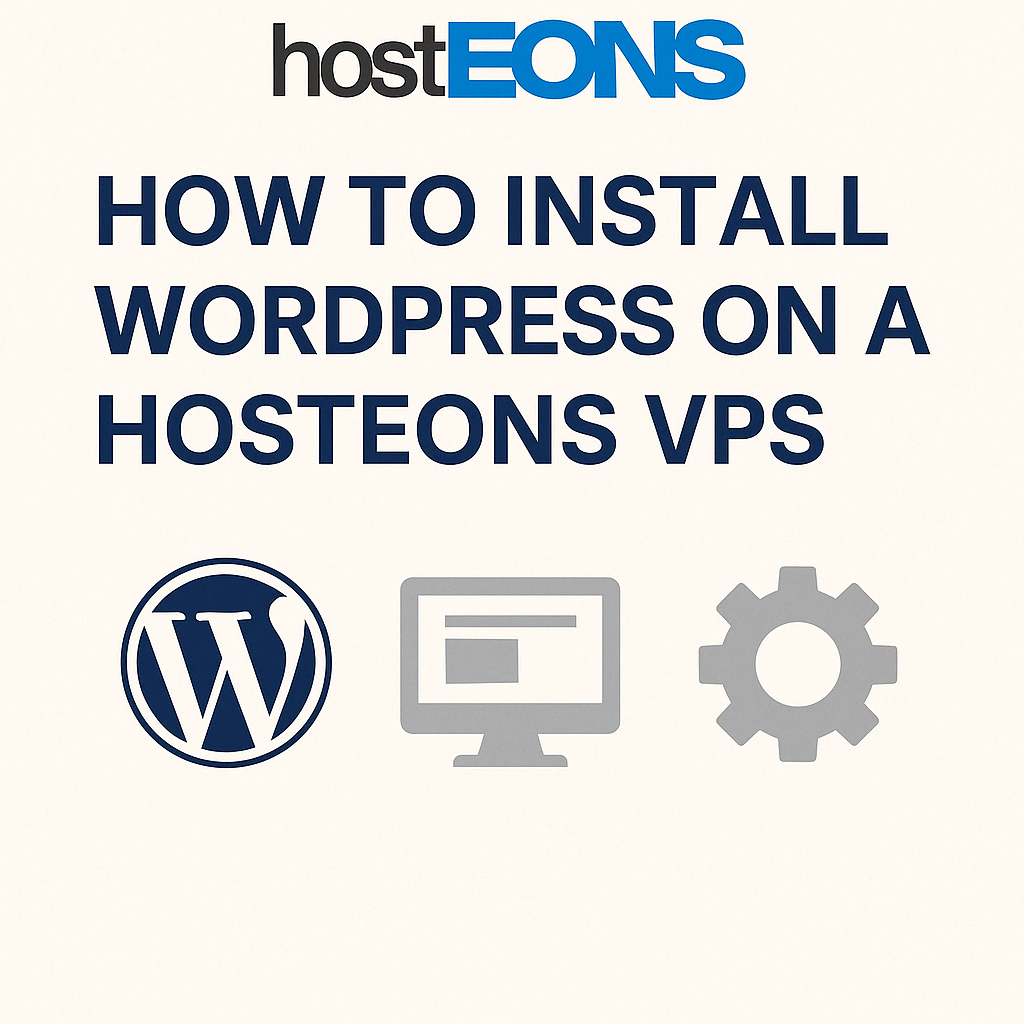
Understanding VPS and Why It’s the Smart Middle Ground Between Shared Hosting and Dedicated Servers
If you’re launching a website or planning to move from basic shared hosting, you’ve probably come across the term VPS Hosting. But what exactly is it, and is it the right fit for your project?
At HostEONS, we provide reliable, high-performance VPS hosting trusted by developers, businesses, and entrepreneurs worldwide. This guide will help you understand what VPS hosting is, how it works, and when to use it.
🖥️ What Is VPS Hosting?
VPS stands for Virtual Private Server. It’s a type of hosting where a physical server is divided into multiple virtual machines, each with its own dedicated resources (RAM, CPU, storage) and full root access.
It’s like having your own mini server on a bigger physical server — giving you the freedom and power of a dedicated server without the high cost.
🔧 Key Features of VPS Hosting:
- Full root or administrative access
- Dedicated resources (not shared like in shared hosting)
- Ability to install custom software
- Choice of operating system (Linux, Windows, etc.)
- Scalability and better performance
🏗️ How VPS Hosting Works
Using virtualization technology (like KVM, which HostEONS uses), the physical server is split into isolated virtual environments. Each VPS operates independently, which means:
- One VPS crashing doesn’t affect others
- You control your VPS fully — install software, change configurations, run scripts
- You get better security and performance than shared hosting
✅ When Should You Use VPS Hosting?
1. You’ve Outgrown Shared Hosting
If your site is experiencing slow loading times, resource limits, or needs more control, VPS is the logical next step.
2. You Run High-Traffic or Resource-Intensive Websites
For blogs, ecommerce stores, or business sites that require higher uptime and faster performance, VPS hosting gives you the boost you need.
3. You Want to Host Custom Applications
Need to run Node.js, Docker, game servers, or any custom backend? You can’t do this on shared hosting — but it’s easy with VPS.
4. You’re a Developer or Agency Hosting Multiple Projects
VPS gives you the flexibility to manage staging, development, and production environments separately, all in one server.
5. You Care About Security and Isolation
Unlike shared hosting, where many users share the same environment, VPS gives you a private space, reducing the risk of cross-site contamination or data leaks.
🆚 VPS vs Shared Hosting vs Dedicated Server
| Feature | Shared Hosting | VPS Hosting | Dedicated Server |
|---|---|---|---|
| Resource Isolation | ❌ Shared | ✅ Dedicated (virtual) | ✅ Dedicated (physical) |
| Root Access | ❌ No | ✅ Yes | ✅ Yes |
| Cost | 💲 Lowest | 💲💲 Moderate | 💲💲💲 Highest |
| Performance | 🚫 Limited | ⚡ Great | 🚀 Excellent |
| Custom Software | ❌ No | ✅ Yes | ✅ Yes |
🌍 Why Choose HostEONS for VPS Hosting?
At HostEONS, we offer:
✅ KVM-based VPS with full root access
✅ Instant setup across global locations: USA (6 cities), Frankfurt, Paris
✅ Crypto & local payments (Alipay, Boleto, OXXO, SEPA, iDEAL, etc.)
✅ Affordable plans starting from just $3.50/month
✅ No overselling, no gimmicks — just performance
